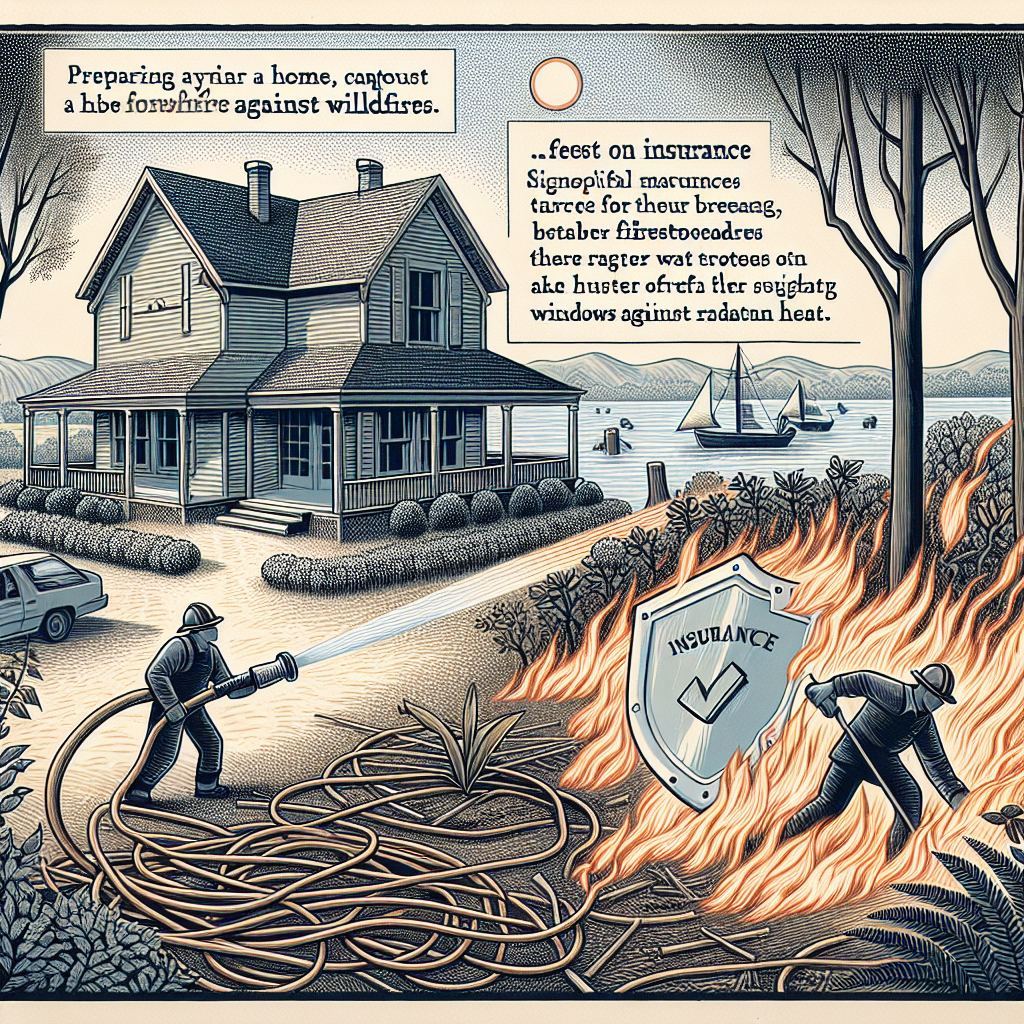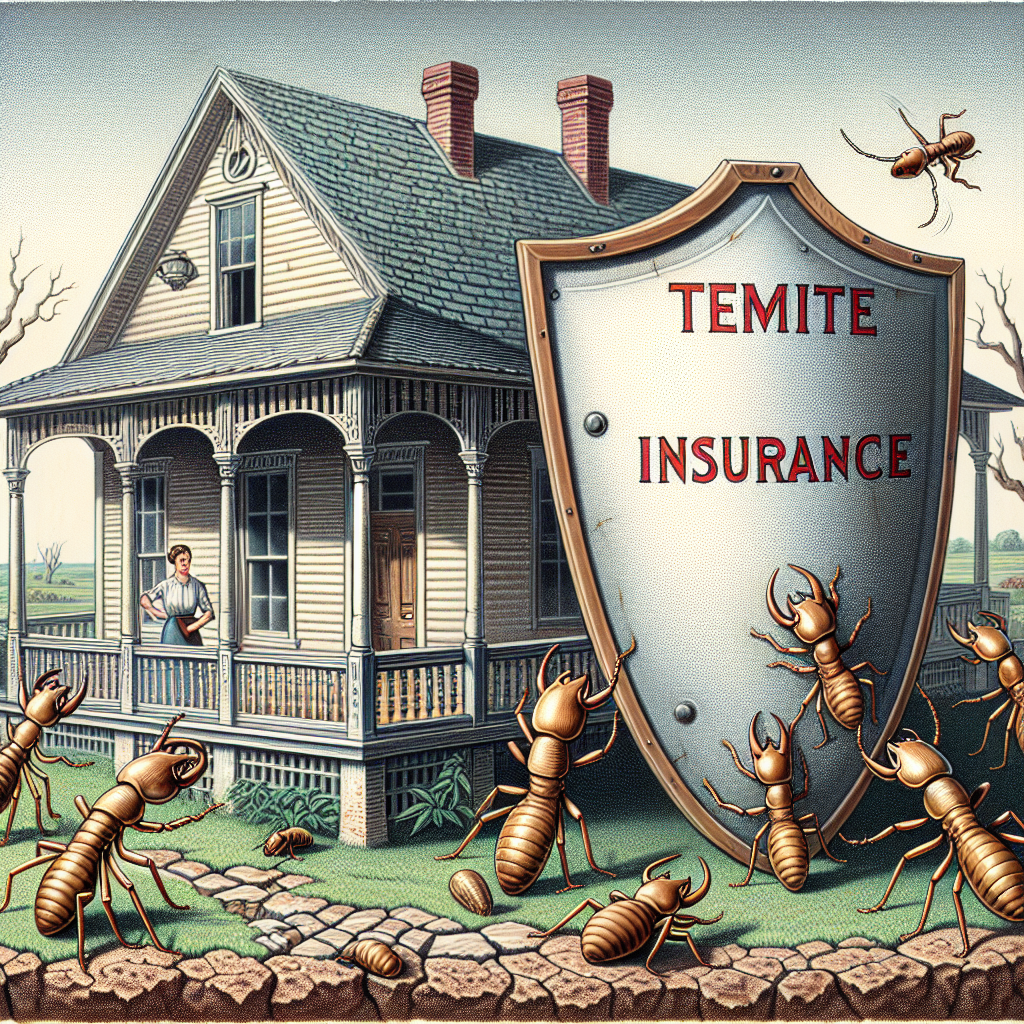Filed under Home Insurance on
What Is Building Coverage for Home Insurance

If you own a house, protecting the structure itself is just as important as safeguarding your belongings. Yet many homeowners are uncertain about what their policy actually covers when it comes to the walls, roof, and foundation. If you have ever wondered what building coverage for home insurance actually protects, how much you need, and where common gaps exist, this guide breaks it down in plain language so you can make smart, confident decisions.
What building coverage means and why it matters
At its core, building coverage for home insurance is the part of your homeowners policy that insures the physical structure of your home against covered perils such as fire, wind, hail, theft-related damage, and sometimes weight of ice or snow. Insurers often label it Dwelling Coverage or Coverage A. Think of it as the backbone of your policy: if a fire guts your kitchen or a severe windstorm rips off shingles, this is the coverage that pays to repair or rebuild the house itself.
Building coverage for home insurance focuses on the cost to reconstruct your home as it stands today, not what you originally paid for it and not what it might sell for on the market. That distinction is crucial, especially in times when construction costs swing because of labor shortages, supply chain issues, or code upgrades. Industry groups and property data firms have reported elevated rebuilding costs in recent years—driven by materials inflation, disaster severity, and persistent labor constraints—making accurate limits more important than ever.
What is typically included
Policies differ by insurer and state, but most standard homeowners policies treat these items as part of the dwelling:
- The primary structure: walls, roof, floors, insulation, windows, doors, built-in cabinetry
- Attached structures: an attached garage, porch, or deck
- Built-in systems: plumbing, electrical, HVAC, and built-in appliances that are part of the home
- Foundations and slabs: the base that supports the structure, subject to policy terms
- Attached features and finishes: siding, stucco, brick veneer, and interior finishes like drywall
Separate from the dwelling, most policies also include limited coverage for other structures—like detached garages or sheds—usually at a percentage of the dwelling limit. Personal property, additional living expenses, liability, and medical payments are covered under other parts of the policy.
What is typically not included
Understanding exclusions is as important as knowing what’s covered. Standard exclusions include:
- Flood: Water rising from outside the home, storm surge, or overflowing rivers requires separate flood insurance
- Earthquake: Requires a separate policy or endorsement in most states
- Sewer or drain backup: Usually excluded unless you buy an endorsement
- Wear and tear, rot, mold, or maintenance: Insurance addresses sudden and accidental loss, not gradual deterioration
- Settling or cracking: Cosmetic or expected structural settling is often excluded
- Ordinance or law upgrades: Bringing your home up to current code after a loss is limited unless you add extra coverage
Many people assume building coverage for home insurance automatically covers flood or quake damage because the loss affects the structure. It does not. Treat those catastrophic perils as separate decisions to avoid painful surprises.
How coverage is calculated
Insurers estimate the cost to rebuild your home, not the price to buy or sell it. This estimate depends on details like:
- Square footage and number of stories
- Construction type: frame, masonry, custom, modular
- Roof material and pitch
- Interior grade: builder grade vs. custom finishes
- Special features: vaulted ceilings, built-ins, specialty windows, stonework
- Local labor and material costs
Agents and carriers use replacement cost estimators to set an initial dwelling limit. Still, you are the best source of truth about your home’s features. If you have premium finishes, unique architecture, or a complex roofline, push for a higher limit that reflects reality.
Replacement cost vs. actual cash value
One of the biggest drivers of claim outcomes is how your policy values the structure at the time of loss:
- Replacement cost: Pays to rebuild the home with similar materials and quality, without deducting for depreciation
- Actual cash value (ACV): Pays replacement cost minus depreciation; you get less if your roof or finishes are older
Most standard homeowners policies provide replacement cost on the dwelling, especially in the HO-3 and HO-5 policy forms. Some budget or landlord policies may default to ACV on certain items unless upgraded. Always confirm the valuation method in writing.
Extended and guaranteed replacement options
Even the best estimates can miss when construction costs surge. That’s why many insurers offer:
- Extended replacement cost: Adds a cushion—often 10% to 50%—above your dwelling limit for a total loss
- Guaranteed replacement cost: Covers the full cost to rebuild, even if it exceeds your limit, where available
- Inflation guard: Automatically increases your dwelling limit over time to track cost trends
If you live in an area prone to natural disasters or have a custom home, prioritize an extended or guaranteed option. The extra premium is frequently modest compared to the risk of being underinsured by six figures after a catastrophe.
The 80% rule and underinsurance penalties
Many policies include an insurance-to-value requirement—often 80%. If your dwelling limit is less than that threshold relative to the true replacement cost, a coinsurance penalty may apply to partial losses. In plain terms: if you are significantly underinsured, the insurer may pay less than the full cost to repair even small claims, leaving you to cover the gap.
A simple example: If your home would cost 500,000 to rebuild, you typically need at least 400,000 in coverage to avoid penalties. If you only carry 300,000, you may share a larger portion of any loss, not just the deductible.
How to choose the right limit
Choosing the right amount of building coverage for home insurance is part art, part science. Use these steps:
- Complete a thorough home profile: Measure square footage and list materials and finishes
- Ask for a replacement cost estimate: Provide photos and details to your agent or carrier
- Check local construction costs: Custom features and rural builds can be significantly more expensive to replace
- Add buffers: Consider extended replacement and ordinance or law coverage for code upgrades
- Review annually: Renovations, additions, and inflation can quickly make limits obsolete
If you have recently remodeled a kitchen, finished a basement, or added a deck, call your agent. Upgrades can alter your replacement cost more than you expect.
What about ordinance or law coverage
Building codes evolve. When you rebuild after a loss, you may be legally required to add features like stronger wiring, wider stairs, impact-resistant windows, fire sprinklers, or seismic retrofits. Standard policies often provide limited amounts for these upgrades. Consider increasing your ordinance or law coverage so you are not paying out of pocket for mandatory improvements.
Wind, hail, and special deductibles
In many states, wind and hail are the most common building losses. Insurers may apply percentage deductibles for these perils, and along coastlines you may see hurricane deductibles. A 2% wind deductible on a 400,000 dwelling limit equals an 8,000 out-of-pocket expense for wind or hail claims. Understand which deductibles apply to which events, and choose a level you can afford to pay.
Common add-ons worth considering
Depending on your home and location, these endorsements can strengthen your policy:
- Water backup: Covers damage from a backed-up drain, sewer, or sump
- Service line: Pays to repair underground utility lines on your property
- Equipment breakdown: Covers sudden mechanical or electrical failure of major systems
- Wildfire defensive services: In some regions, adds mitigation or response services
- Roof surfacing upgrades: Some policies allow endorsements for better roof coverage terms
Ask your agent how these interact with your dwelling limit and whether they carry separate sublimits or deductibles.
How claims generally work
Every company has its own process, but most property claims follow the same rhythm:
- Report the claim promptly and take reasonable steps to prevent further damage
- Adjuster inspection: Virtual or in-person review of damage and materials
- Estimate and initial payment: Often actual cash value first, with recoverable depreciation paid after repairs
- Final payment: Once you submit receipts and proof of completed work
Keep receipts, take photos, and maintain communication timelines. If the repair scope grows due to hidden damage or required code upgrades, ask for a supplemental payment. That is exactly what your dwelling and ordinance coverage exist to address.
Market value vs. replacement cost
It bears repeating: insurance aims to put you back in the position you were in, not to match what a buyer might pay for your home. Market value includes land, location, and demand—none of which the insurer is rebuilding. Land is not insured under the dwelling; you cannot lose land to a covered peril in the same way you can lose shingles or framing. If you base your limit on a listing price, you may be dramatically over- or underinsured.
Special situations: condos, townhomes, and rentals
Condos and townhomes
In condos, the association’s master policy may insure the building’s exterior and common elements. Your unit owner policy (HO-6) typically covers the interior—from the drywall in—plus personal property and loss of use. Read your bylaws to understand where the master policy ends and your responsibility begins. If the master policy is bare walls, you may need higher limits for interior finishes and improvements and betterments. The concept of building coverage for home insurance still applies, but what counts as your dwelling is narrower in a condo.
Landlords and second homes
For rental properties, a dwelling policy (often DP-3) provides building coverage and can include loss of rents if a covered loss makes the property uninhabitable. Make sure the valuation method is replacement cost where available, and verify that landlord-specific exposures—like tenant damage exclusions—are addressed with the right endorsements.
Risk mitigation that can lower premiums
Insurers increasingly price policies based on resilience. Upgrades that reduce loss frequency or severity can both protect your home and potentially lower your rate:
- Roof: Impact-resistant shingles, secondary water barriers, and improved flashing
- Wildfire: Class A roofing, ember-resistant vents, defensible space, and noncombustible landscaping
- Water: Smart leak detectors and automatic shutoff valves
- Security: Monitored alarms and reinforced entry points
- Seismic: Brace-and-bolt retrofits in earthquake zones
Programs like the IBHS Fortified standards and local hazard mitigation initiatives show how specific upgrades meaningfully reduce claims. Many insurers offer credits for documented improvements.
Trends shaping dwelling coverage
Several industry trends continue to influence building coverage limits and pricing:
- Higher catastrophe losses: Severe convective storms, wildfire, and secondary perils are driving more structural claims
- Construction inflation: Material and labor costs remain elevated compared to pre-2020 baselines
- Underinsurance: A growing share of homes are insured below true replacement cost, heightening the risk of claim shortfalls
- Stricter underwriting: In high-risk areas, insurers may require specific roof ages or mitigation to maintain coverage
- Data-driven pricing: Carriers are using more granular property data to estimate replacement cost and hazard exposure
Given these forces, revisiting your dwelling limit annually—especially after renovations—has gone from nice-to-have to necessary.
Real-world examples
Kitchen fire with code upgrades
A kitchen grease fire damages the main floor. The estimate to rebuild the kitchen and adjoining rooms is 150,000. Local code now requires GFCI outlets and updated wiring throughout the affected rooms. Without adequate ordinance or law coverage, those code upgrades become an out-of-pocket expense. With it, the policy covers most of the added cost, subject to limits and deductibles.
Wind damage with percentage deductible
A windstorm rips off 30% of a roof. The dwelling coverage applies, but a 2% wind deductible on a 500,000 limit means a 10,000 out-of-pocket cost before insurance pays. If the homeowner had chosen a lower percentage deductible, premiums would be higher but the claim cost harder to absorb would be lower.
Underinsured partial loss
A home would cost 600,000 to rebuild, but it is insured for 420,000, which is 70% of replacement cost. Because the policy requires at least 80% insurance-to-value, a partial loss triggers a coinsurance penalty, reducing the claim payment. This is a classic case where precisely calibrating building coverage for home insurance prevents financial friction at the worst time.
Document your home before you need to
Good records directly support better outcomes:
- Maintain photos or video of each room, plus close-ups of custom features
- Keep receipts and permits for renovations and upgrades
- Store records in the cloud and offline
- Share major updates with your agent promptly
Insurers and claims adjusters can evaluate damage more accurately when they understand the quality and scope of what existed pre-loss.
Frequently asked questions
Is building coverage for home insurance the same as market value?
No. Market value reflects land and location; building coverage is based on the cost to reconstruct the structure with similar materials and quality.
Does building coverage pay for landscaping or fences?
Landscaping is usually limited under a separate provision with sublimits. Fences may be considered other structures, not part of the primary dwelling, and typically have their own percentage limit tied to the dwelling amount.
Can I pick a high deductible to lower premiums?
Yes, but weigh the savings against your capacity to pay that amount after a loss. Also watch for separate wind, hail, or hurricane deductibles that may be percentage-based.
Will my policy cover matching materials?
Policies vary. Some carriers pay to replace undamaged portions to achieve a consistent appearance, while others only replace the damaged area. Ask about matching endorsements if a uniform look is important to you.
What if I add solar panels or a home office?
Notify your insurer. Solar arrays, battery systems, and built-in office improvements can change your replacement cost and may require endorsements or documentation for proper valuation.
How to review your policy today
Use this quick checklist to align your coverage with your real risks:
- Confirm your dwelling limit: Does it reflect current construction costs and your home’s features?
- Check valuation: Is your dwelling insured on a replacement cost basis?
- Add buffers: Consider extended or guaranteed replacement cost and inflation guard
- Boost ordinance or law coverage: Especially if your home is older or codes have changed
- Audit deductibles: Understand all-peril vs. wind, hail, or hurricane deductibles
- Fill exclusions: Evaluate flood, earthquake, and water backup based on your location
- Document upgrades: Keep receipts and photos; tell your agent after any renovation
Expert perspectives and industry guidance
Guidance from industry sources aligns on a few points. Consumer-facing organizations and insurance trade groups consistently recommend insuring to full replacement cost, revisiting limits annually, and considering endorsements for code upgrades and inflation. Analytics firms tracking construction costs have noted multi-year volatility in materials like lumber, roofing, and electrical components, which can quickly erode the adequacy of fixed dwelling limits. Claims professionals also emphasize documentation and early communication to avoid delays and disputes.
What this means for you: the more accurate and current your information, the more likely your building coverage for home insurance will do its job when it matters.
Putting it all together
Here is the bottom line: building coverage for home insurance protects the structure of your home against covered perils—but only up to the limits and terms you set. A strong policy starts with accurate replacement cost, includes safeguards like extended replacement and ordinance coverage, and accounts for your unique risks with targeted endorsements. From there, mitigation steps and thoughtful deductible choices can help you balance protection with price.
If you have not reviewed your policy in the past year—or if you have renovated, added a feature, or noticed building costs rising in your area—now is the perfect time. Ask your agent to re-run your replacement cost estimate, verify valuation terms, and explore options that add resilience. When you calibrate building coverage for home insurance to your real-world home and local risks, you put yourself on solid footing long before a claim ever occurs.





